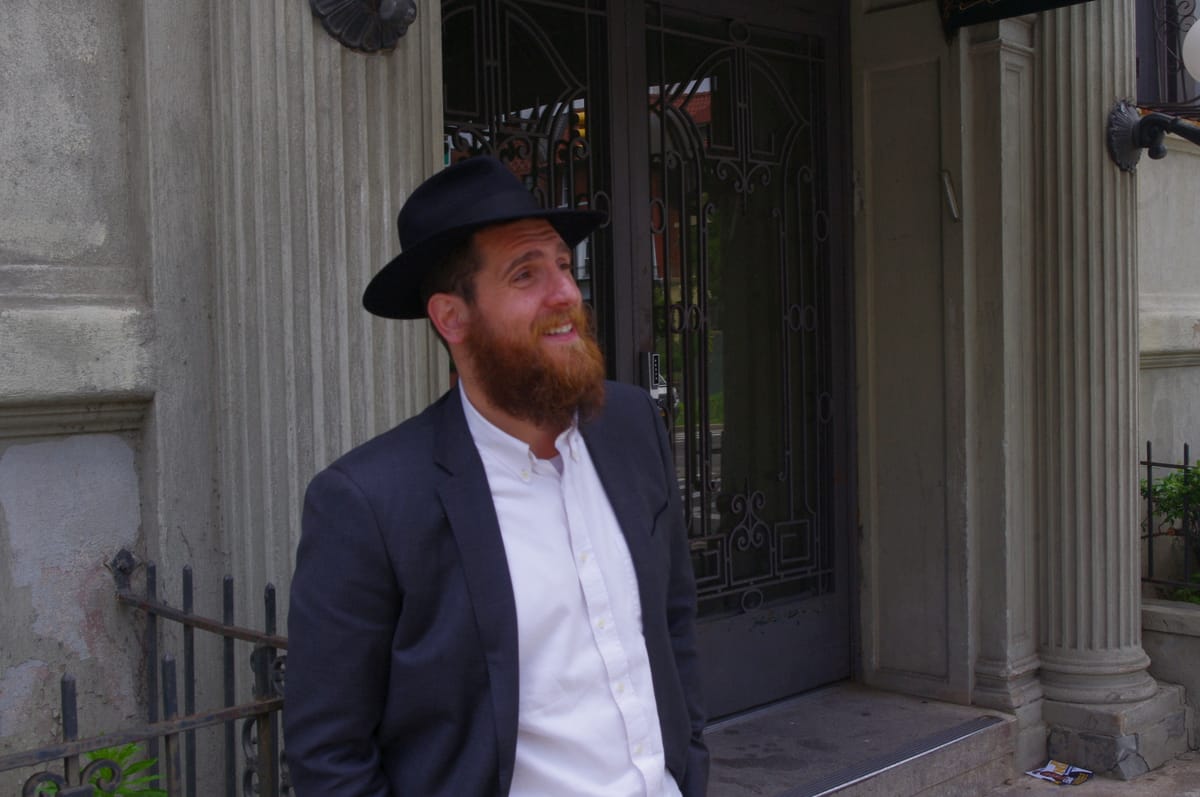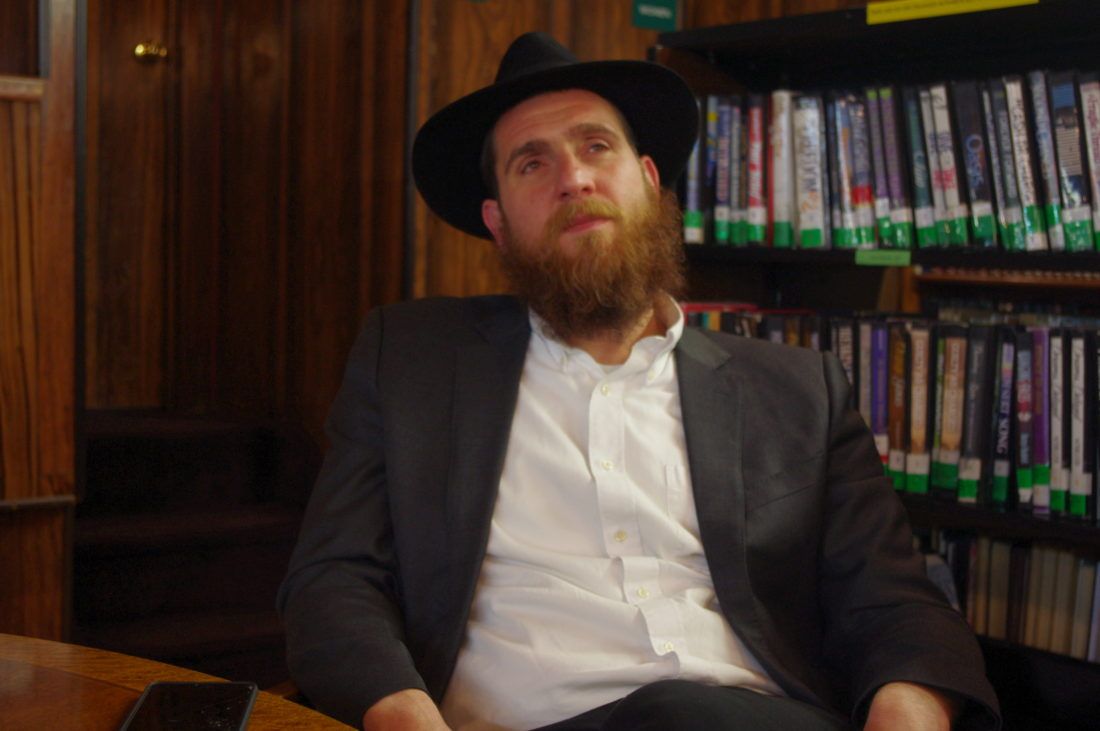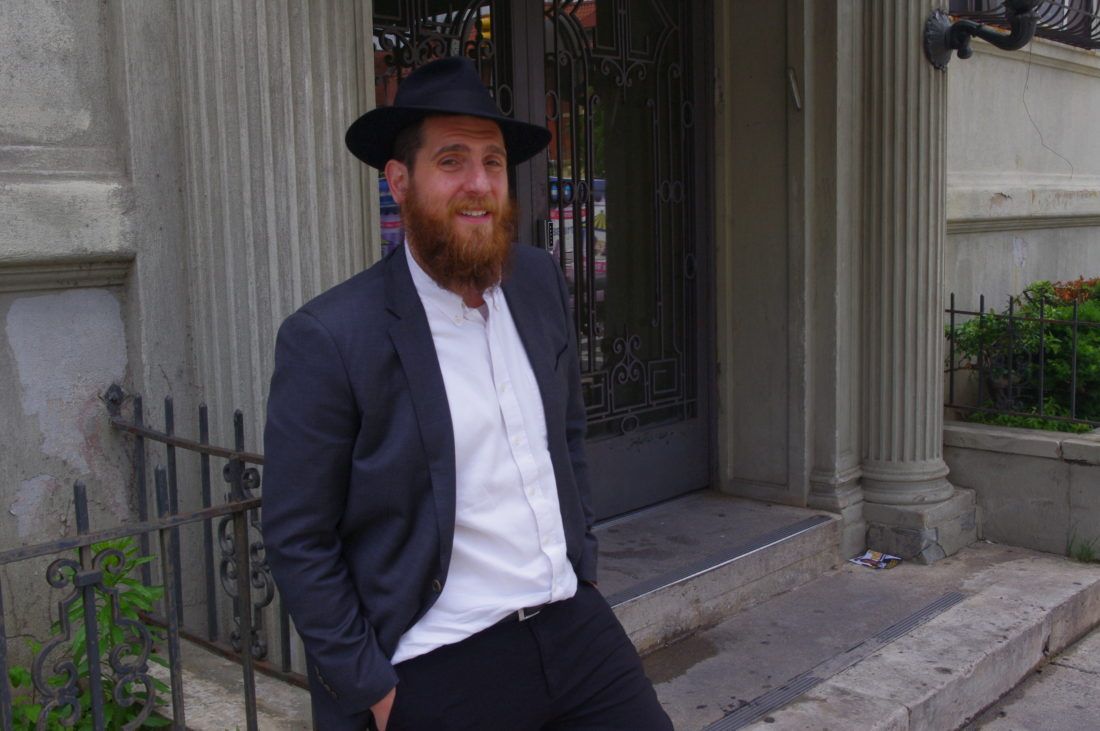Yoni Katz Can Take You on a ‘Messianic’ Tour of Hasidic Crown Heights


CROWN HEIGHTS—It all started with a fight over bike lanes.
Rabbi Yoni Katz, 40, almost 10 years ago noticed “tension” between “hipsters” and Hasidic people in Williamsburg centered around them.
“They had their bike lanes running through Bedford Avenue, and when they used to drive their bikes through the heart of the Hasidic neighborhood, it was a big cultural shock for them,” Katz, who was born in Israel and raised in Pittsburgh, explained in a small library on Kingston Ave. where he begins his tours of Hasidic Crown Heights.
“I said, ‘Let me do something about it,’ and I tweeted about an open forum in Williamsburg where the tension was really bad,” Katz, who was working at the Lubavitch Youth Organization and blogging at 11213.org, went on.
A few years later, as some of the similar “hipster” types involved in the bike lane controversy started moving to Crown Heights, Katz,— along with friend Zalman Kohn, Rabbi Manis Friedman and a few others—launched a “Unite The Beards” campaign.
“I said, ‘We’ll invite any hipster or artist who lives in the neighborhood and welcome them,’” he told Bklyner.
Why?
In Crown Heights, where he lives next to a “building full of hipsters,” Katz says though no open animosity is on display, seldom did people from the two groups converse with one another. “It’s just not neighborly love,” he said.
In 2016, when Beryl Epstein, who gave the Lubavitch Youth Organization-sponsored tour before him, became ill, Katz began to fill in as a substitute guide. And when Epstein died in the spring of 2017, Katz took over.
“I was just left holding the bag,” he said. “I never intended to give tours.”
But the Unite the Beards effort, Katz says, prepared him for giving tours to people from all walks of life.
“I had the interest, because of the campaign that I was doing, reaching out to non-Jewish people and totally non-affiliated people,” Katz explained.
During the Hasidic Brooklyn tour, a three-hour, $69-a-person Airbnb experience, Katz interacts with a broader demographic than just Brooklyn gentrifiers. (Katz says the revenue goes straight to funding the library and his salary comes from the Lubavitch Youth Organization, which is headed by his father-in-law, Shlomo Friedman). On any given day, 12 to 15 people from all over the world—Italy, Germany, United Arab Emirates, England, Palestine, Utah along with some people who live in Crown Heights or adjacent neighborhoods—join him to pick his brain and walk around Crown Heights.
“Look what’s happening here, you have people from all religious backgrounds, all parts of the world, all different faiths,” Katz says, looking around the table in the library during the beginning of a tour. “Could it get any better than this?”
The journey begins in a library on Kingston Ave., between Union Street and Eastern Parkway, where Katz explains Hasidic Judaism—and more specifically the Chabad-Lubavitch movement— as well as a bit of his life story and a brief history of the neighborhood. Though relaxed and freewheeling, Katz has his shpiel down to the letter.
He has, at the very least, two jokes he tells in identical fashions every tour. For example: Hasidim in Crown Heights are different from Satmar Hasidim in Williamsburg, because Satmar come from Hungary, rather than parts of Eastern Europe, speak Yiddish at home rather than English, close themselves off from the modern world and people in Crown Heights have iPhones, and in Williamsburg “they all have Androids,” he quips.
“The philosophy is different. The philosophy is, we’re not going to close ourselves off,” he says, earnestly explaining the difference between Satmar and Chabad movements.
The other joke, about a group of military commanders of various nationalities who tell their soldiers to jump out the window and only one—the fictitious Russian named Vladamir—complies, and asks “Out of which window?” has a bit more meaning to it.
“That’s what Hasidic really means,” he explains to a group of around a dozen on a Thursday morning in mid-June. ‘“God, if you need it, we’re not thinking about heaven, we’re not thinking about the afterlife, we’re not thinking about nirvana. We’re thinking about you.”
For Hasidim, God is the vulnerable party in the God-human relationship, Katz says.
“It was serving god out of the kindness it does for God, not out of the kindness that it does for you, because in a lot of religions you follow these laws with certain benefits that it’s going to bring to you,” he said. “So the founder of the Hasidic movement came along and said, ‘We don’t serve God for the benefit it would bring to us. That’s not serving God, that’s really serving yourself.’”

After the roughly 45-minute Chabad philosophy tutorial, Katz takes tours out on the streets to show them around key spots in the neighborhood. First is a mikveh—a Jewish ritual bath used on certain occasions like conversions, following menstruation, and before marriage.
“If a Jewish community only has enough money for a mikveh, a Torah scroll or a synagogue, the mikveh takes precedence over everything,” Katz told the tour, explaining how high a priority mikvehs are under Jewish law.
The tour then does a circuit which includes the place where Torahs and Tefillin are made, Gombo’s Hemieshe Bakery on Kingston Ave., if there’s time a Matzah factory, as well as a sheitel (a wig worn by some Orthodox women) store and a kapota (long black coat Lubavtichers wear on certain occasions) and black fedora shop.
In addition, Katz takes people to the iconic 770 Eastern Parkway, the headquarters of the Chabad-Lubavitch movement, where he shows them around and tell the tour takers about the Rebbe, Menachem Mendel Schneerson.
Katz sees walking around the neighborhood almost every day with a different group as more than just showing others a neighborhood he loves.
“This is very messianic,” he told Bklyner outside his apartment building while with one of his seven children to get off the bus. “You have complete strangers uniting. You can have anybody and everybody. Isn’t it amazing?”
“I feel like this is a slice of what the world could look like in a short amount of time,” he added. “Slowly but surely, it can happen all around the world. It’s very possible to have one family, with Jews and non-Jews. We’re all created in God’s image.”




